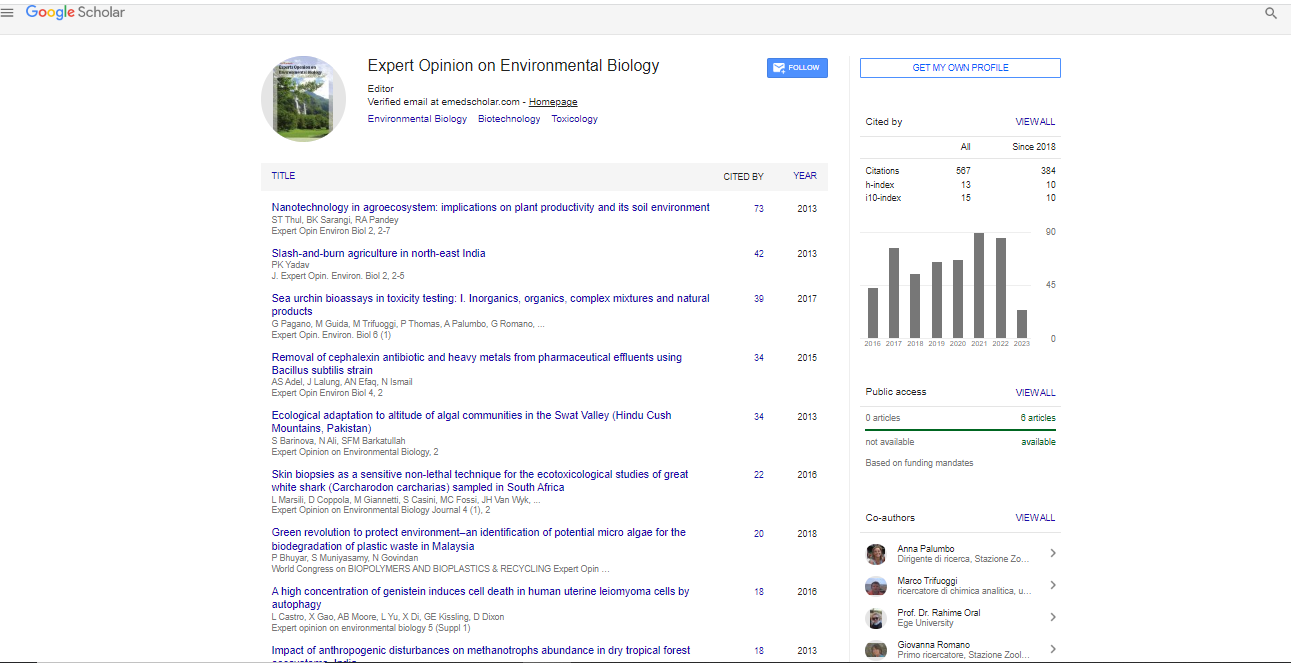Model for estimating the transient climate response to changes in atmospheric aerosols and radioactively-active well-mixed gases
S A Soldatenko and R M Yusupov
SPIIRAS, Russian Federation
: Expert Opin Environ Biol
Abstract
Natural and anthropogenic atmospheric aerosols play an important role in variations of the radiation balance of the Earth's climate system (ECS). Being a dispersed system, atmospheric aerosol scatters and absorbs shortwave solar and long-wave terrestrial radiation and, in addition, affects the formation of clouds and precipitation and the radiation properties of clouds by changing the microphysical characteristics of cloud particles. Along with the atmospheric aerosol, the redistribution of radiation fluxes in the ECS is significantly affected by various gas components of the Earth’s atmosphere. In the context of the global climate change and assessing the consequences of this change for nature and society, those radiatively active aerosols and gas components are of interest whose atmospheric concentrations noticeably vary globally due to natural causes (e.g., as a result of volcanic eruptions, dust and sandstorms, forest and steppe fires), as well as due to anthropogenic activities. In this presentation, we would like to introduce a simple, reliable and useful mathematical model that allows us to assess the ECS response to the global radiation forcing generated by atmospheric aerosols and radiationactive gases in accordance with the specified scenarios of their atmospheric concentration changes. We will focus on a transient process, during which the ECS, being initially in a (quasi) equilibrium state, tries to “adapt” to the external radiation forcing and move into a new (quasi) equilibrium state. It is obvious that the assessment of the equilibrium response of the ECS to external forcing is a much simpler task. For the two-component energy-balance climate model (EFM), the impulse response function (IRP) was analytically obtained. Then the ECS response to an external arbitrary radiative forcing applied at a certain initial time is defined as the convolution of two functions: the function describing the radiative forcing, and the IRP. Some illustrative results are discussed for two idealized scenarios (abrupt 2×CO2 and 1pctCO2 scenarios), four RCPs scenarios, and the Pinatubo eruption which is the second-largest terrestrial eruption of the 20th century.
Biography
S A Soldatenko has completed his PhD in 1983 from Military Aerospace Engineering Academy, and Doctor of Sciences (Math & Physics) in 1992 from St Petersburg State University. For many years, he was a Department Chairman at several universities and research organizations. For about 20 years we worked in Canada and Australia. Currently, he is a Senior Fellow at St Petersburg Institute for Computer Sciences of the Russian Academy of Sciences (SPIIRAS). He has published more than 250 papers in reputed journals and has been serving as an Editorial Board Member of repute.
E-mail: soldatenko@iias.spb.su
 Spanish
Spanish  Chinese
Chinese  Russian
Russian  German
German  French
French  Japanese
Japanese  Portuguese
Portuguese  Hindi
Hindi 
